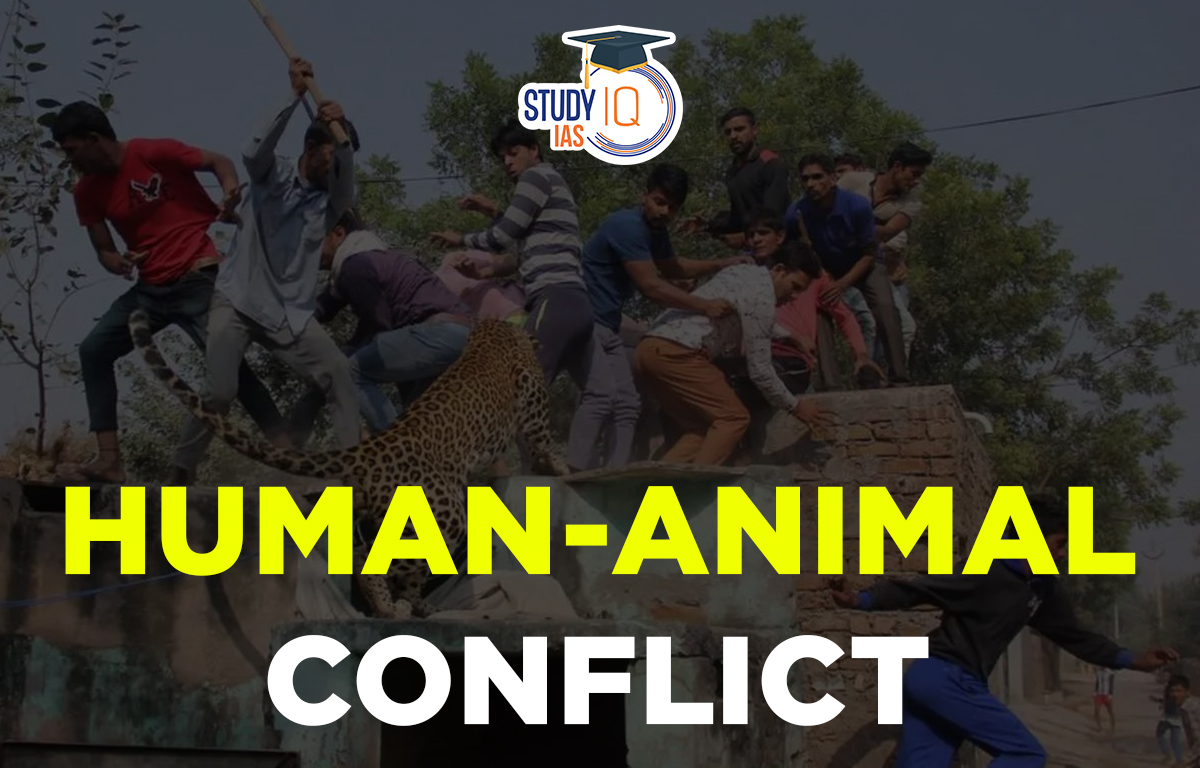Table of Contents
About Human-Animal Conflict
- Human-wildlife conflict is when encounters between humans and wildlife lead to negative results, such as loss of property, livelihoods, and even life.
- The IUCN Species Survival Commission (SSC) defines Human-Animal conflict as, ‘struggles that emerge when the presence or behaviour of wildlife poses an actual or perceived, direct and recurring threat to human interests or needs, leading to disagreements between groups of people and negative impacts on people and/or wildlife.’
Human-Animal Conflict Causes
- As human populations and demand for space continue to grow, people and wildlife are increasingly interacting and competing for resources, leading to conflicts.
- Agricultural expansion, infrastructure development, and climate change result in habitat loss.
Human-Animal Conflict Impacts
- It can result in the decline and potential eradication of species.
- Communities can experience financial losses and threats to health and safety, livelihoods, food security, and property.
- On a larger scale, it places pressure on the global supply chain and production of agricultural goods, leading to food insecurity and decreased productivity among producers.
Human-Animal Conflict Solutions
- There is a need to include the management of human-wildlife conflict in national policies and strategies to ensure resources are made available to stakeholders.

- Measures can involve barriers (fences, nets, trenches), guarding and early-warning systems, deterrents and repellents (sirens, lights, beehives), translocation (moving wildlife), compensation or insurance, providing risk-reducing alternatives, as well as managing tensions between stakeholders involved in these situations.
- Implementation of the above measures requires consideration of good principles in community led-conservation, in collaboration with the communities affected.
- Collaborations could involve conservation practitioners, community leaders, governments, researchers, businesses and other stakeholders; and who have expertise in ecology, social psychology, economics, peacebuilding and environmental law.
India Specific Measures
- The Wildlife Protection Act, of 1972, provides a legal framework to prohibit hunting and the establishment of protected areas.
- The Indian Forest Act and Acts of State Governments facilitate the categorisation of forests for regulation of Forest resources.
- National Wildlife Action Plan (2002-2016) recognizes the need to reduce human-wildlife conflict and emphasises the establishment of effective compensation mechanisms.
- The Standing Committee of the National Board of Wildlife (SC-NBWL) has issued an Advisory for the Management of Human-Wildlife Conflict (HWC) for empowering Gram Panchayats, Providing Insurance coverage and Relief.


 Daily Quiz 01 July 2025
Daily Quiz 01 July 2025
 China, Pakistan and Bangladesh Trilatera...
China, Pakistan and Bangladesh Trilatera...
 US Pulls Funding from GAVI-Global Vaccin...
US Pulls Funding from GAVI-Global Vaccin...





















